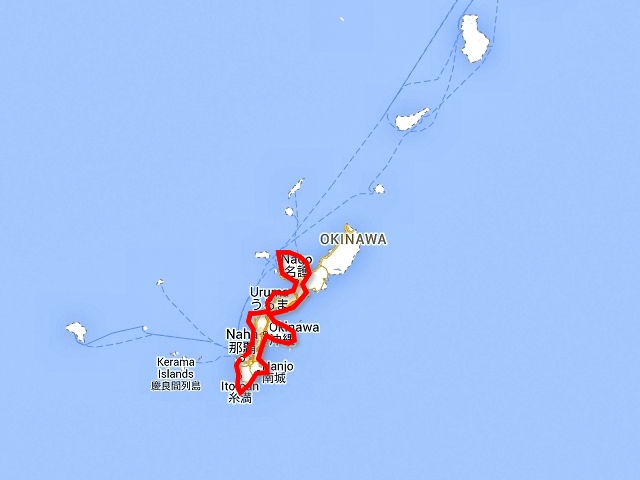
Nothing compares to the simple pleasure of a bike ride. J.F.Kennedy
Search this website
Japan, Okinawa Island
Naha, Itoman, Yaese, Seifa-Utaki, Okinawa, Katsuren, Uruma, Kin, Kube, Nago, Makiya, ostrov Yagaji, Nakijin, Motobu, Nago, Onna, Kadena, Chatan, Naha
The ferry to Okinawa would depart at 18:00, I had plenty of time. My room needed to be vacated by 10:00. I left the fully loaded bicycle in the hostel and went to see the parts of Kagoshima I had not seen before. Nothing interesting, really. I did not take a single photo. Worth mentioning was a preserved wall of the first Catholic church in Japan. The Church survived many difficulties over the centuries. However, bombardment during the Second World War caused so much destruction that only a fragment of the wall with an entrance gate remained. I could not photograph it due to the bright light and the too short distance from it.
To prevent suffering, I supplied myself for the voyage with some food and beer. The ferry would leave from the new harbor. There are three harbors in Kagoshima. One is used for departures to Sakurajima, the other one for ferries to the nearby islands and the third for departures to Okinawa. Easy to figure it out, impossible to mix the harbors up. With my bank card, I purchased a one-way ticket for about 3000 CZK ($150) for myself and then paid about 500 CZK ($25) in cash (as seems to be the custom both in Japan and in Korea) for my bicycle. I pushed my bicycle on to the ferry, where they secured it to the side of the deck with a rope.
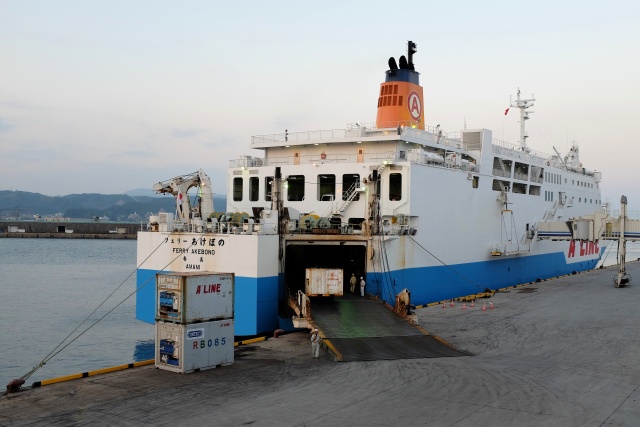
Kagoshima: Our old tub
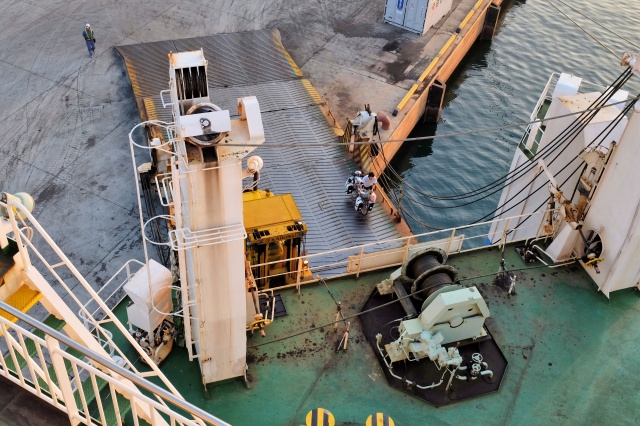
Kagoshima: Another cyclist boarding the ferry
Ferry to Okinawa
I realized that I was no longer in Korea where credit cards could be used everywhere when I inquired at both the ferry restaurant and store, finding that they only accepted cash. Half an hour before the departure was too late to withdraw any cash; there were no ATMs at the port and the ticket office did not offer any cashback. It was no crisis, though. I had about 2000 JPY (400 CZK or $20), which would be sufficient.
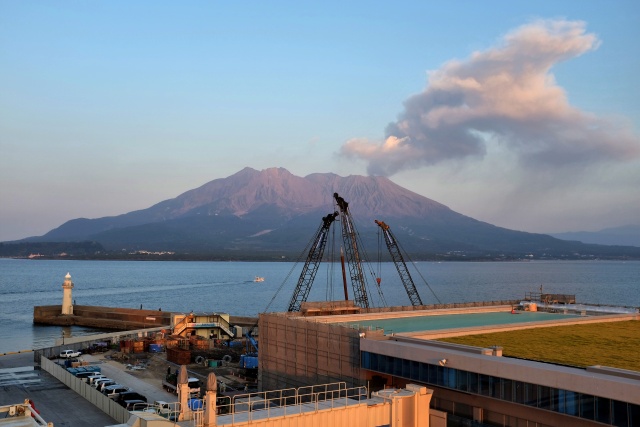
Kagoshima: Sakurajima volcano gave another mighty fart
I wanted to work on my laptop before going to sleep, but two guys were sitting next to me, pouring soju down their throats and shouting like crazy. I made some remarks in Czech, asking them to be quiet and they took it as an invitation for a friendly chat. I politely refused the soju, but otherwise they were great company. They lived on one of the islands on our route. The older one had four children. We rang his wife several times, but she could only tell me her name, she spoke no other English. One hour later, I was so exhausted by them that I marched into the shower (unfortunately there was no spa) and went to bed.
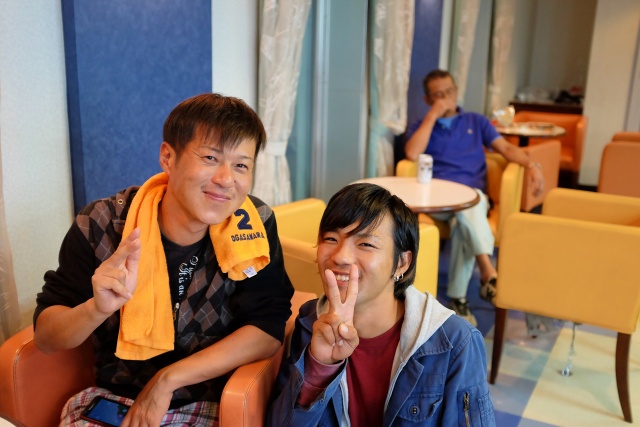
Ship to Okinawa: On the voyage, I got acquainted with two guys under the heavy influence of soju
Sleeping was on futons, just like on the ferry to Fukuoka. Strangely enough, there were 20 people sleeping in a cabin for 50 people, yet we were all squashed on top of each another. The reservation system issued the tickets in sequence (a ticket included the cabin and bed number). Naturally I made my bed on the other, empty, side of the cabin and later in the night was joined by others who had followed my example. The sea was calm, I slept well. During the night, I was woken several times by the ferry intercom announcing our arrival at various islands on the way.
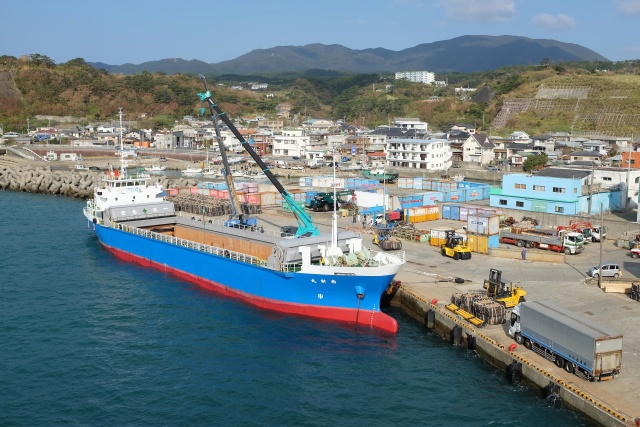
Ship to Okinawa: Docking at one of the islands
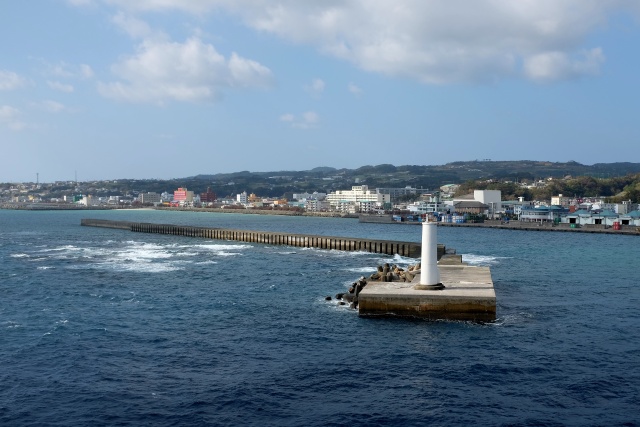
Ship to Okinawa: Island harbor
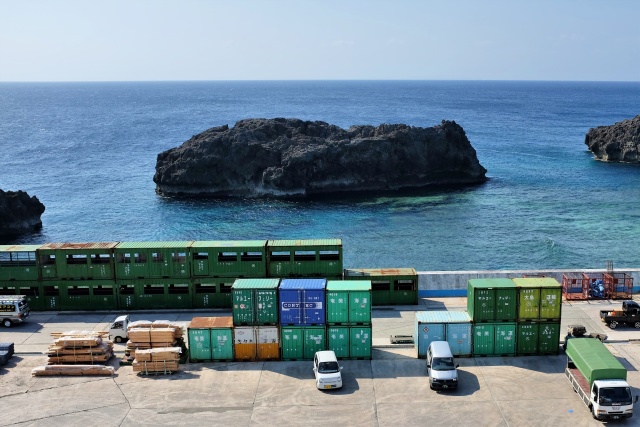
Ship to Okinawa: Containers on the wharf
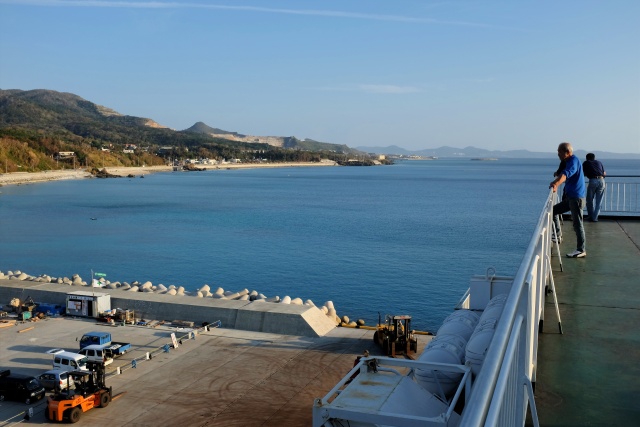
Ship to Okinawa: After 23 hours, we docked at Motobu on Okinawa, with yet another voyage to Naha harbor awaiting us
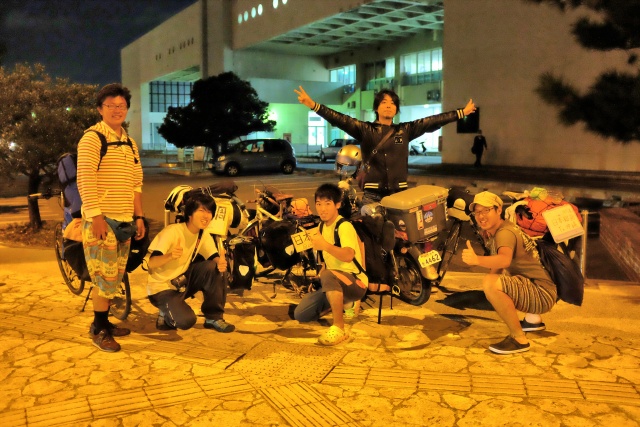
Naha: Cycling crowd after disembarkation – apart from the guy in black who is actually a (small) motorcyclist
Night in a Park
Twenty-five hours later, we arrived in Naha already after dusk. Some cyclists had their accommodation reserved. Not I, of course. I located the nearest park on my GPS and set off. Two guys, Yutu and Kanta, who could not decide whether to search for accommodation or a place to camp, followed my example. The park was nearby, we found our sleeping place immediately. There was no need to wash, as I'd had a shower on the ferry before arriving. However, the boys and I were starving. We cycled to the nearby Family Mart, purchased boxes of food and warmed them up. I also made some tea. Convenience stores (combini) always offer hot water, so it was a good idea to have some type of container on hand for warm tea. I used a 1-liter Nalgene bottle, which was perfect. I expanded the bottle holder on my bicycle, carrying it as a second bottle on the bike frame.

Naha: Kanta and Yuta – breakfast after camping together in the park
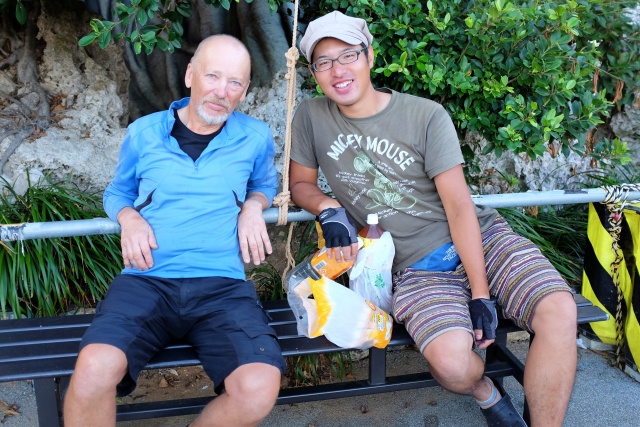
Naha: Satisfying breakfast from Family Mart – Yuta (right) and I.
We ate in the park. I told them my travel stories and Yuta translated it for Kanta. Both were at the time unemployed, but they were not suffering. Okinawa was the last stop on their trip from the northernmost Japanese island of Hokkaido. Some days later, they would return by ferry to Kagoshima and there they planned to hitchhike home to Hokkaido, of course – with their bicycles. They said it would not be a problem.
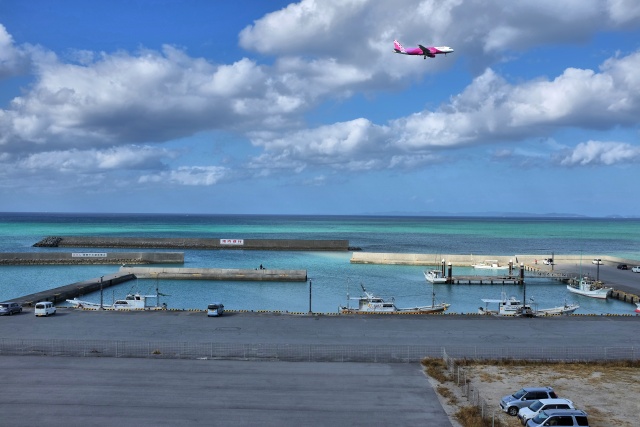
Timigusuku: Coastline in the vicinity of Naha Airport
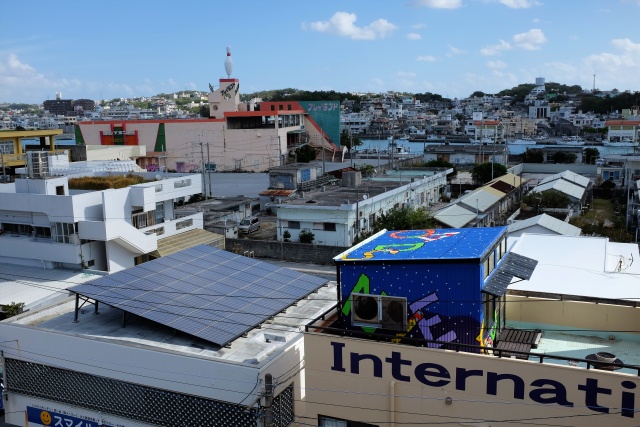
Near Timigusuku: City
The park was monitored and a guard passed by in a small car. When we were pitching our tents, he checked us out for a while, without saying anything. A similar situation occurred in other Okinawan parks – the guards let me pitch my tent without any comments.
Around the Island
I wanted to cycle around Okinawa island in order to fulfil the theme of my web – kolem kolem (around on a bicycle). This would be the fourth time – around Korea, Jeju Island, U Island. I'd got a map on the ferry, but all in Japanese. I arrived at the central Tourist Office in Naha. They would open at 10:00, it was 8:30. I did not hang around, but headed southwards on the coastal road. I needed to get hold of cash, but the ATMs in the combini did not provide me with any, as they only accepted cards issued in Japan. 7-Eleven stores, where I had been able to withdraw cash on Kyushu, did not exist on Okinawa island. An ATM in a Post Office saved me. The Post Office is always a certainty in Japan.
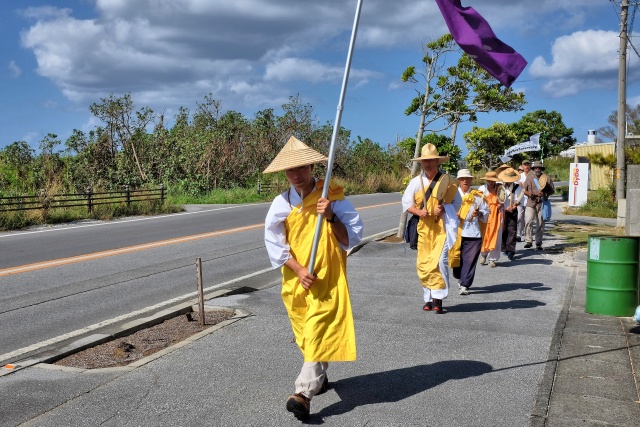
Himeyuri Park: Peace activists
Peace Parks and many sites in memory of the arduous Battle of Okinawa, when the Americans had tried to conquer it during the Second World War, are concentrated in the southern corner of the island. A memorial can be seen in Himeyuri to the students who lost their lives attending to wounded Japanese soldiers in the caves. It was very sad, but I was surprised by the fact that there was no information on who had started the war between the USA and Japan. Currently there is a strong peace movement, working at removing American bases from the island.
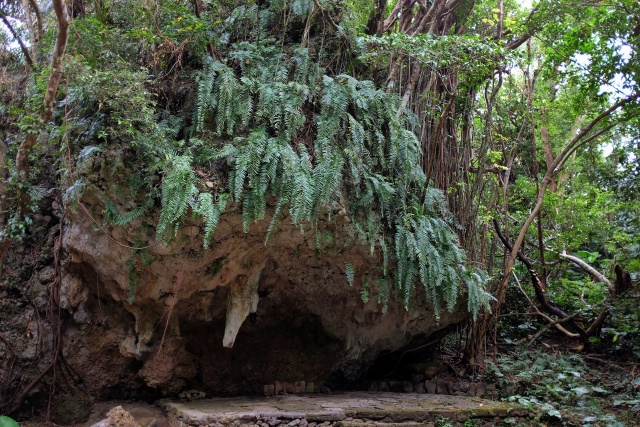
Sefa-Utaki: One of the 'holy' places on Okinawa where someone had an epiphany (and it wasn't due to alcohol, you cynics!)
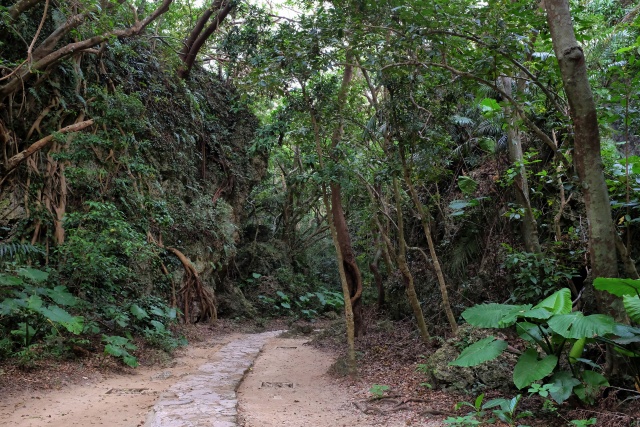
Sefa-Utaki: Access to ceremonial sites
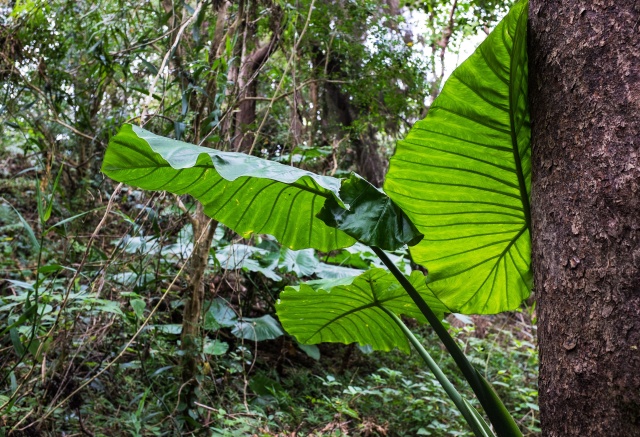
Sefa-Utaki: Leaves
Sefa-Utaki
A more pleasant experience was a visit to one of the most holy sites of the Ryukyu Kingdom – the Sefa-Utaki rock formations. Before entering, visitors are instructed how to behave, by a short video with English subtitles. Before reaching the first site, Ujoguchi, I followed the instructions and stated in my mind "I am here on a visit" and at that very moment a big 10 cm butterfly flew around me twice, possibly a local inspector. The place radiated a peculiar atmosphere, combining extravagant tropical vegetation with black spotted rocks. I liked it there.
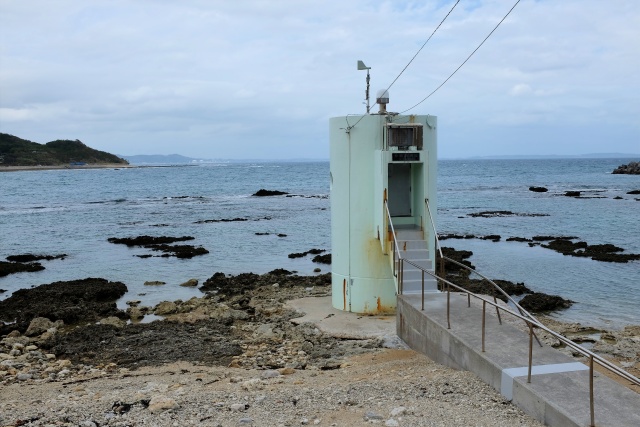
Azama: Harbor building
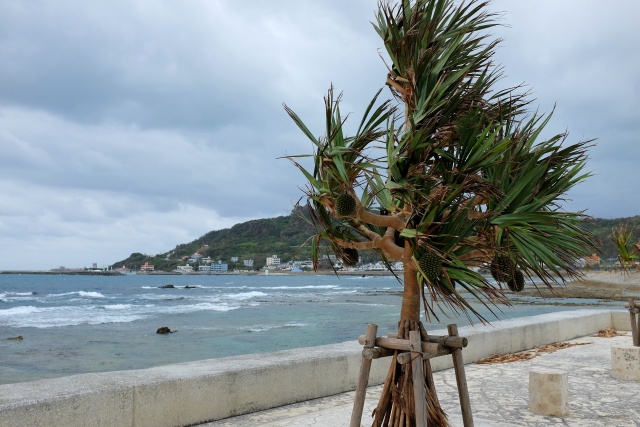
Azama: Wind rustling tree with huge coconuts
Since that morning, a strong wind had been exhausting me. That was why I welcomed a sign to an Athletic Park located on the outskirts of Okinawa. It was a huge park at the coast with several stadiums, courts, a bike lane and sports fields of every type. A perfect place for sleeping, with seven convenient restrooms. There was even a completely empty campsite in the park for 260 CZK ($13). However, about 15 cars were parked in the parking lot of the campsite. The occupants were evidently ready to sleep over there, without paying for a campsite. Neither did I. I picked a nice spot. The park guard made no protest and the bevy of bats did not mind either.
Katsuren Castle Ruins (Katsuren-Jó)
A dense tropical rainfall began in the morning, so I moved my tent under a roof. Nevertheless, it was already quite wet on the outside, I had to dry it a bit with newspapers before packing it up. I started cycling in my waterproof clothes. The lashing lasted for nearly one hour and then the weather turned nice again. I turned to the east towards the ruins of Katsuren-Jó, listed as a UNESCO World Heritage Site. I left my bicycle at a spot beneath the Castle. I no longer even locked it – only taking my camera bag with me. The walk up to the Castle was very steep, nevertheless I could not resist it and went all the way up to the highest point. The walls were still impressive, three enclosing circular walls, together with the Castle's position on the high hill helped to make it impregnable. The view from the top was over Okinawa and several islands with bridges leading to them.
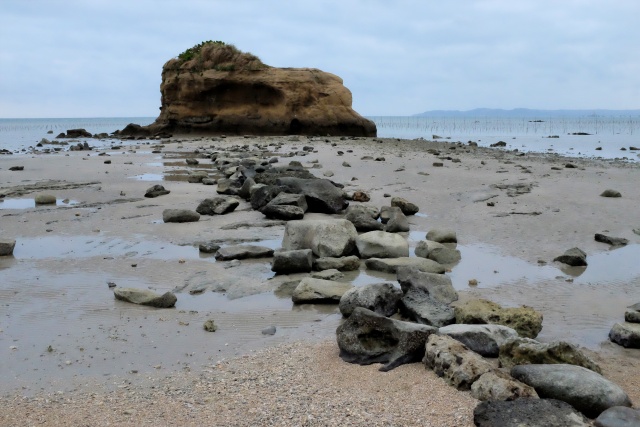
Okinawa (City): Cliff on the shore
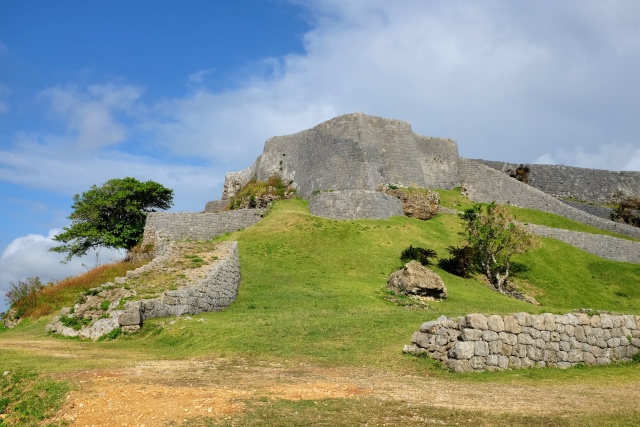
Katsuren-Jó: Castle ruins listed as UNESCO World Heritage Site
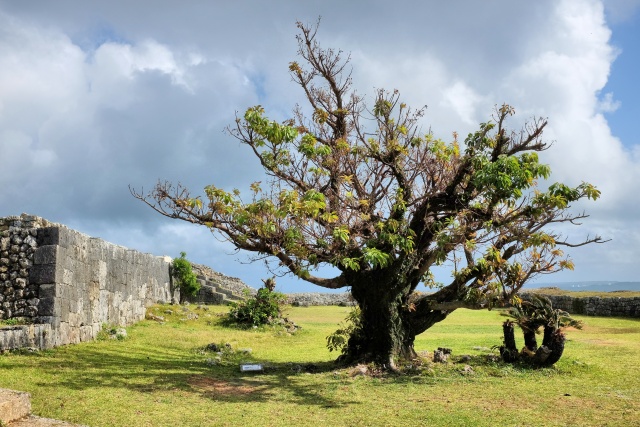
Katsuren-Jó: Tree growing on the holiest of all local holy sites

Katsuren-Jó: Third layer of a bulwark
I continued along the East coast to Kim city, famous for its Kannonji Temple and nearby stalactite caves. The Temple looked very ordinary and was surprisingly small. I accidentally entered the cave at its exit, walked around in it for 400 meters, only realizing my mistake when I hit the grids. I left, found the correct entrance and tried to re-enter. However, I would have had to wait for more than an hour, so I gave up and continued on my way.
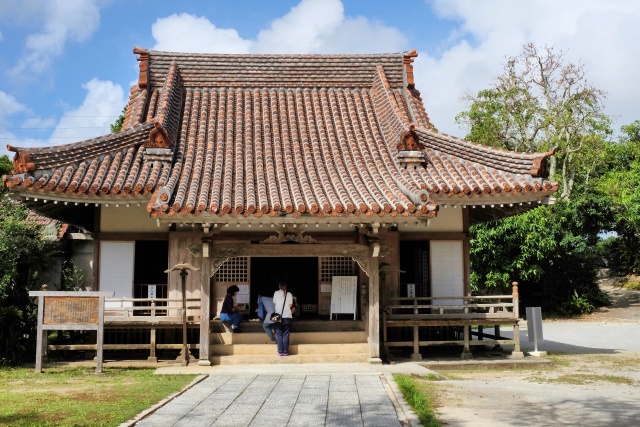
Kim Kannonji: Unobtrusive Temple building
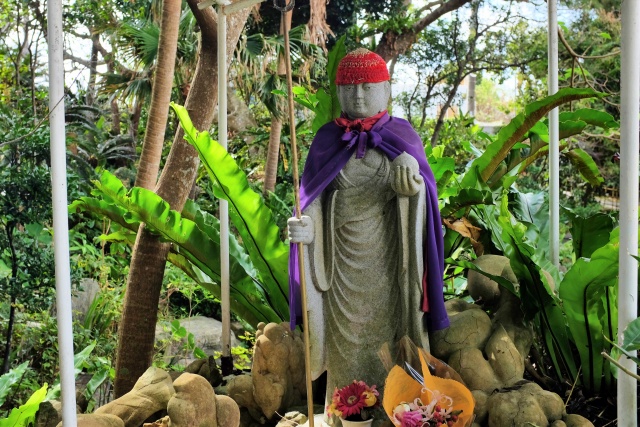
Kim Kannonji: There is always a local community caring for the statues – the cap must be warm and the coat without holes

Kim Kannonji: 'The big umbrella' stalactite formation
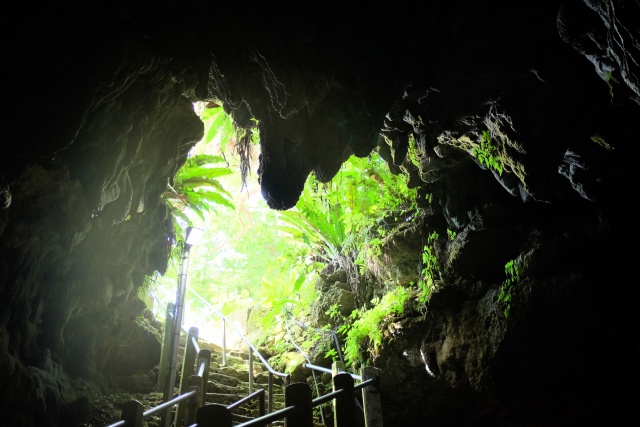
Kim Kannonji: Cave exit
I suffered from the heat, hills, wind and humidity the whole day and decided to skip the northernmost point of the island. There was overall nothing interesting anyway. I crossed the narrow strip of land and found myself on the West coast in Nago city. The City Park beneath the Castle ruins was ideal. I even found a little meadow with the sign "Kampo," which I translated as "Camping". Probably incorrectly. Kampo is a traditional Japanese medicine. Nobody objected, not even the guard who passed on a scooter several times. With foresight, I pitched my tent under a shelter, even though the sky was cloudless. The following morning, the meadow was full of water puddles and I was nicely dry, the tent was not even damp.
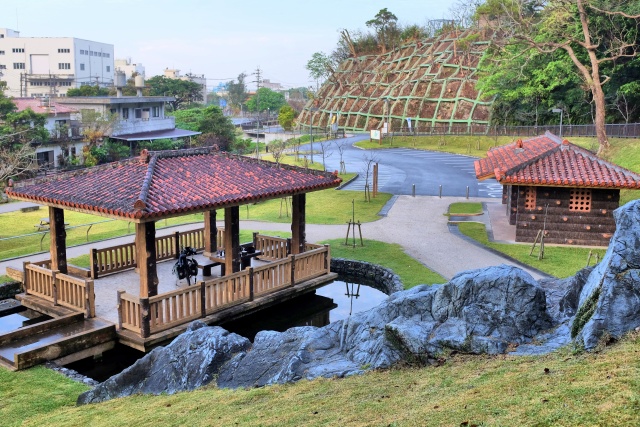
Nago: I slept in the pavilion; bathrooms in the building on the right

Nago: Morning clouds mirrored in the lake near the pavilion
I started cycling around a big peninsula. First over bridges to two islands, a small one called Ou and a much bigger one, Yagaji. Back to the mainland across fertile cultivated countryside. Small crops were actually grown in shifts. Light bulbs, forcing them to grow even at night, hung over the field.
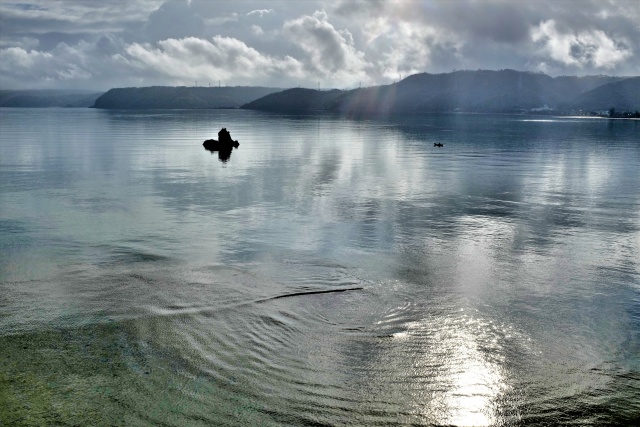
Yagai Island: Sea between Ou and Yagai islands
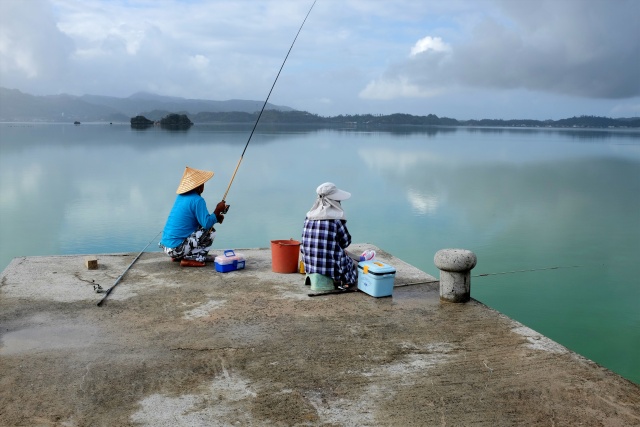
Yagai Island: Fisherman and fisherwoman
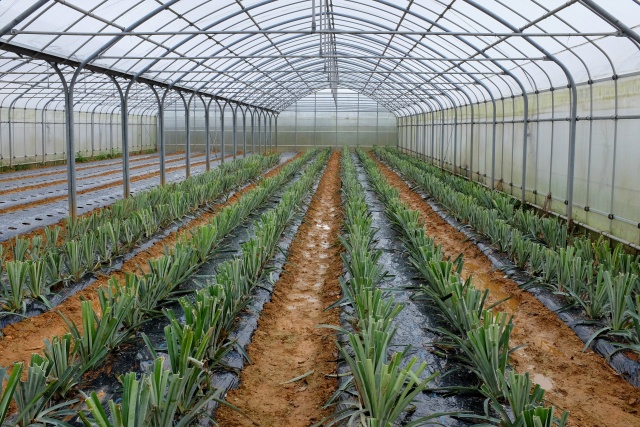
Yagai Island: Greenhouse
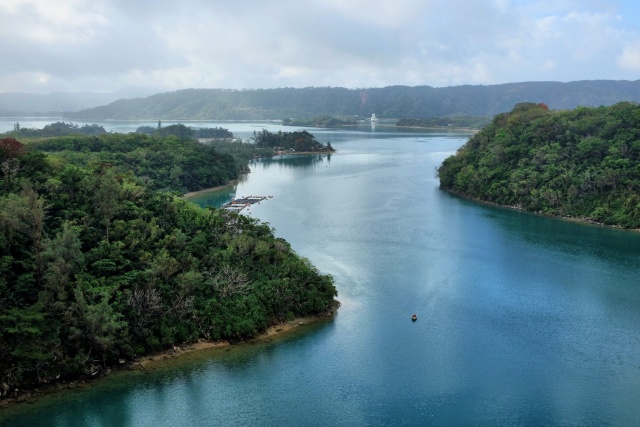
Yagai Island: Sea between Yagai island and the mainland
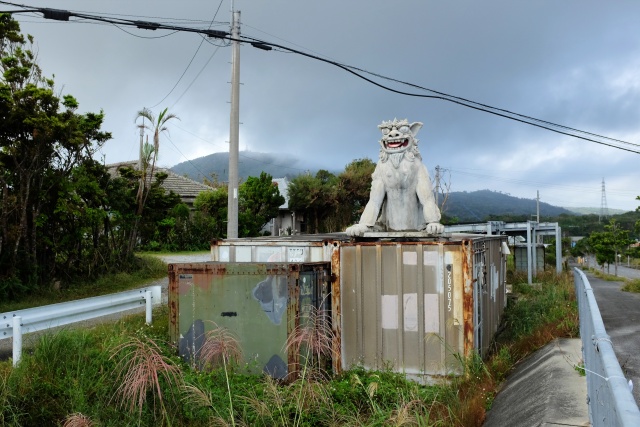
Nakasone: 'Shisa' – unusual shaped lion
Ocean Expo Park
I climbed another steep hill to see the ruins of another castle, this time the less impressive Nakijin-Jó. Back on the coast and a few km later, I reached Ocean Expo Park. I left my bicycle unlocked in one of the parking spaces. There was a guard guiding cars into empty spaces, so it was safe. The Park entrance was free, there was a charge for the Botanical Garden and Aquarium. The Park is exceptionally extensive, I guess stretching for about 7 km along the coast of sandy beaches and emerald green water.
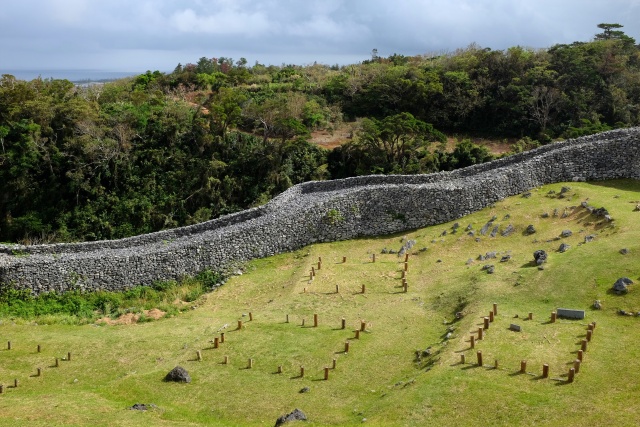
Nakijin: Wall of Nakijin-Jo Fortress
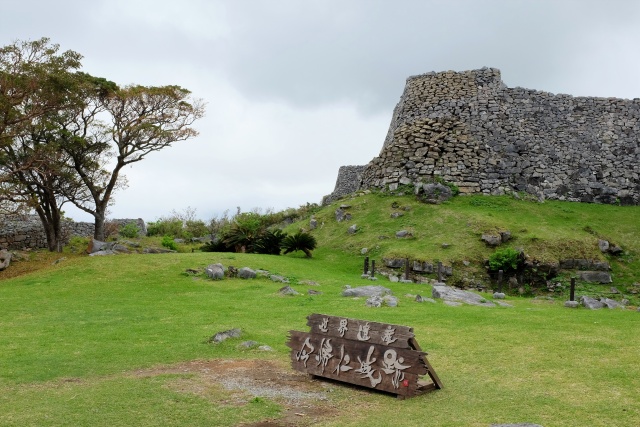
Nakijin: Ruins of Nakijin-Jo Fortress
I saw a family of manatees imported from Mexico. I was delighted to see giant sea turtles from above and below, together with cute little turtles.
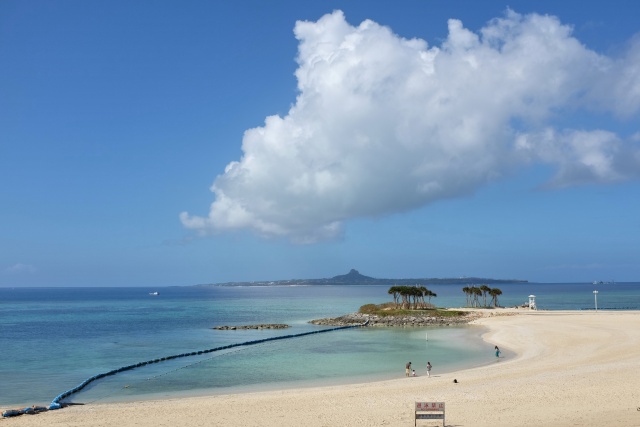
Ocean Expo Park: Emerald Beach
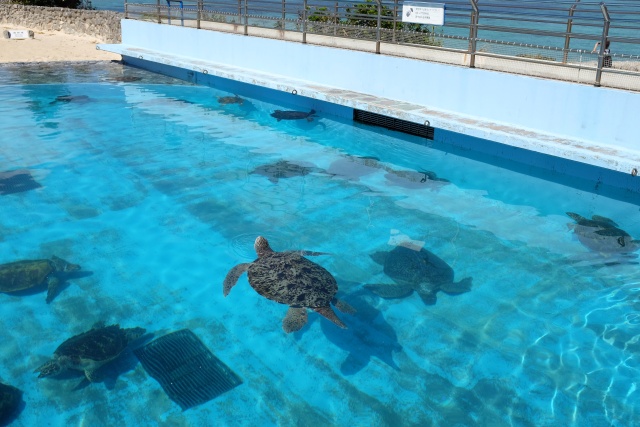
Ocean Expo Park: Big sea turtles
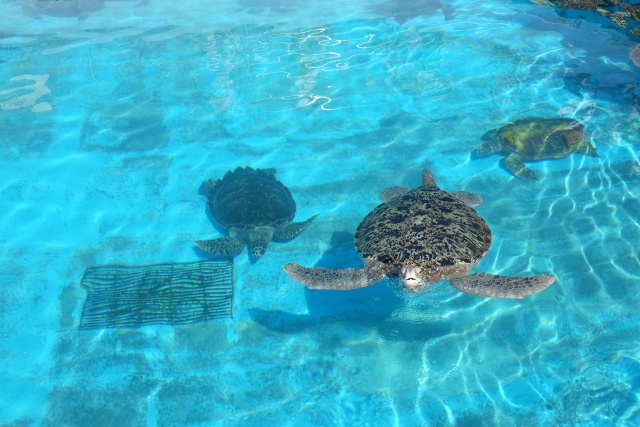
Ocean Expo Park: Turtle taking a breath
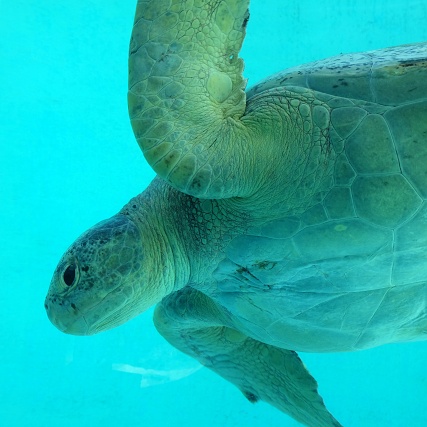
Ocean Expo Park: Turtle from below
At the dolphin pool, I found that a dolphin show was about to start in 20 minutes. I waited to see it. Although the dolphins did impressive tricks, it was a bit weak as a show. The Americans would have made something spectacular out of it. But as it was free of charge, I could not complain. The dolphins were great, just boring choreography, music, trainers' movements. It was funny when other dolphins peered out curiously from the adjacent tanks to see what their colleagues were doing.
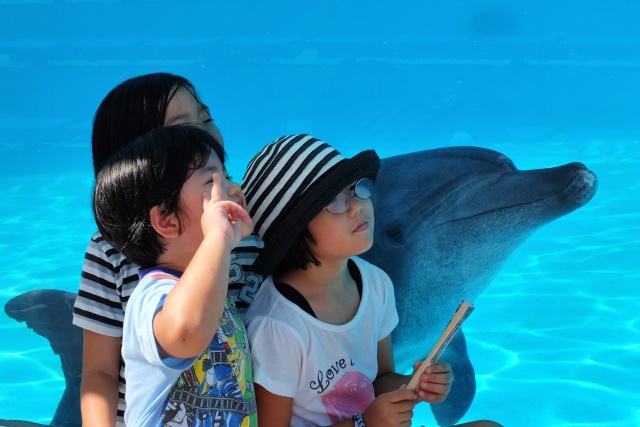
Ocean Expo Park: Kids posing with a dolphin behind the glass
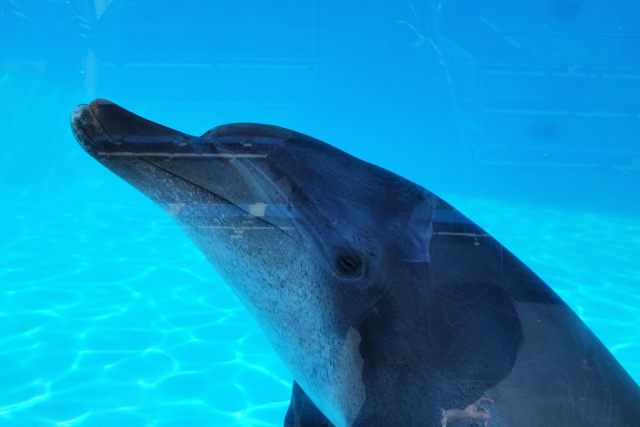
Ocean Expo Park: Dolphin thoughtfully smiling at me

Ocean Expo Park: Dolphin Show
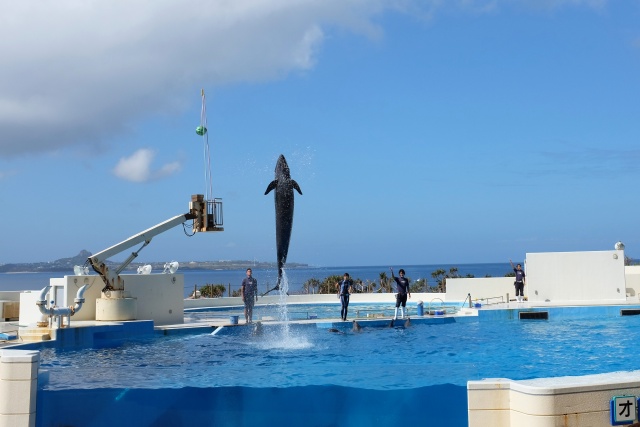
Ocean Expo Park: Dolphin Show

Ocean Expo Park: Dolphin Show
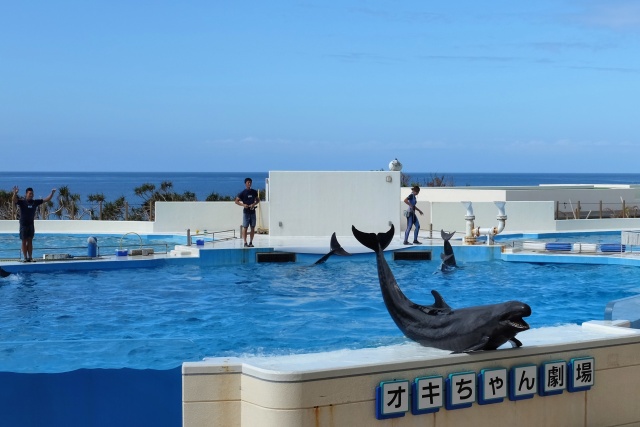
Ocean Expo Park: Dolphin Show – finally, the big boss dolphin presented himself in all his beauty
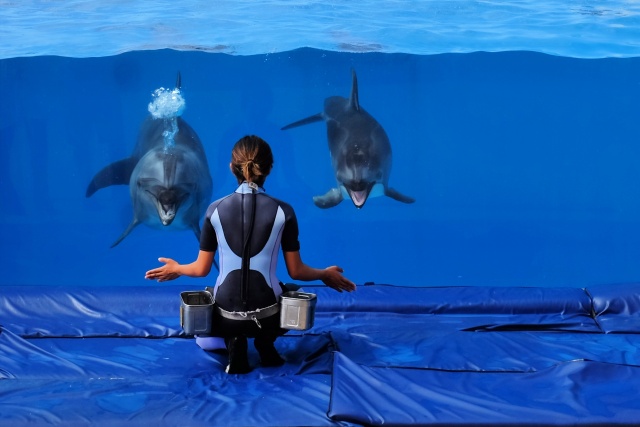
Ocean Expo Park: Trainer communicating with the dolphins – jars of fish at her sides
The afternoon was proceeding to its end. Laid back, I cycled along the coast on a pedestrian and bike path, which was in an unusually good condition, no bumpy surface, as was the norm. Together with a sea view – fantastic! In Nago, I took Road 58, leading along the shore to Naha. It was getting late, so I stopped for the day on the City Beach in Onna and slept like a baby.
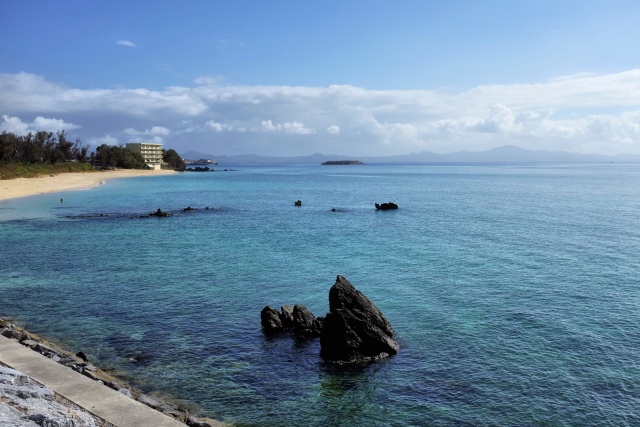
Shiokawa: I rode on the sidewalk for pedestrians and cyclists for about 15 km along the coast
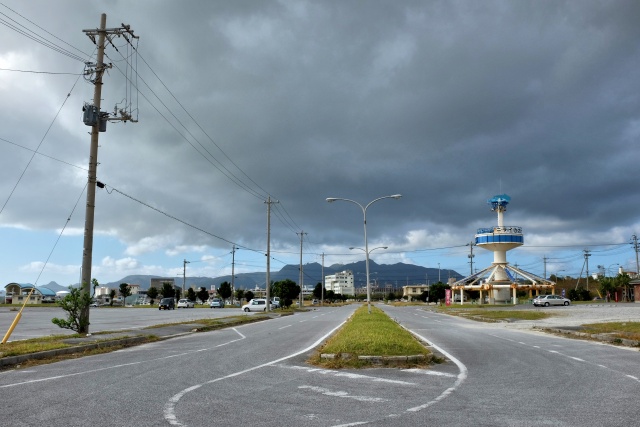
Nago: Seaside parking lot
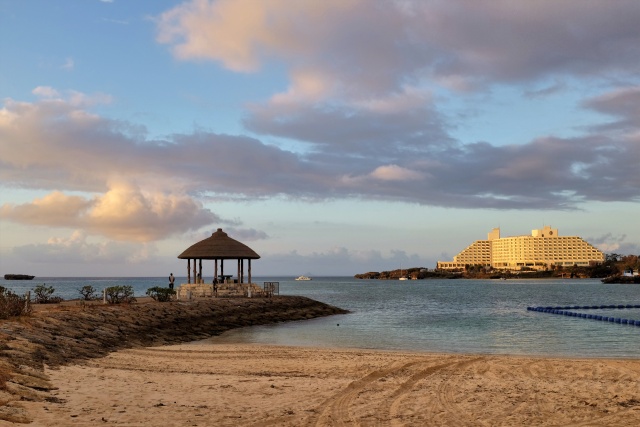
Onna: I camped at the city beach
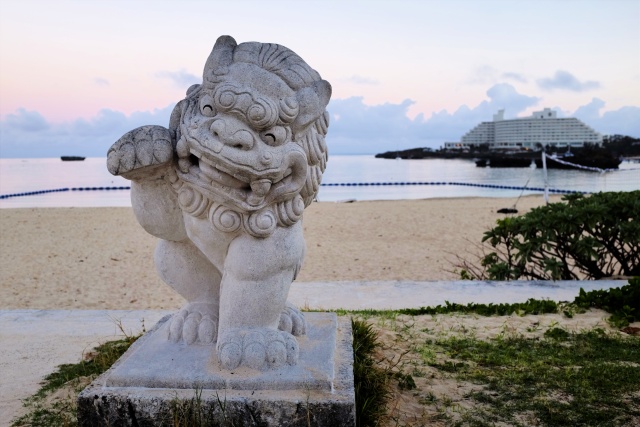
Onna: 'Shisa' on the right of the beach entrance – it's a lion with open jaws
The following morning, I was busy preparing for my final leg to Taiwan. I stopped in an American village situated in the vicinity of a massive American air base in Kadena. Plenty of people were there, enjoying their Sunday afternoon. In a supermarket, I purchased my traditional noodle soup – the best food in such heat. It was a little spicy, but less so than in Korea.
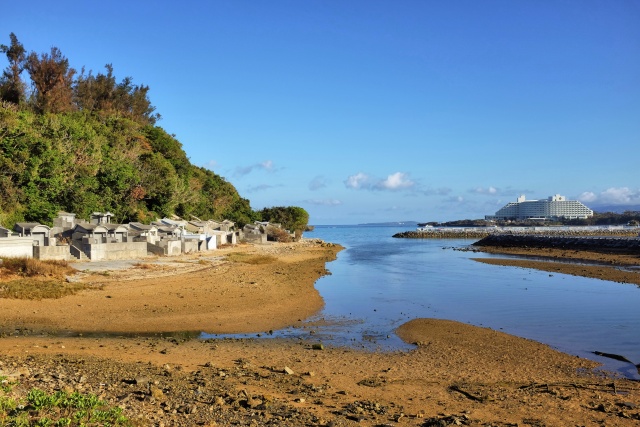
Onna: All Saints' Day mood – graves below the forest on the left
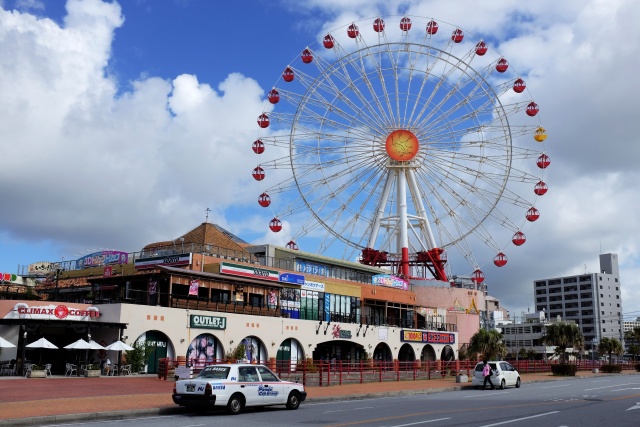
Chatan: Mihama American Village close to the big American air base at Kadena
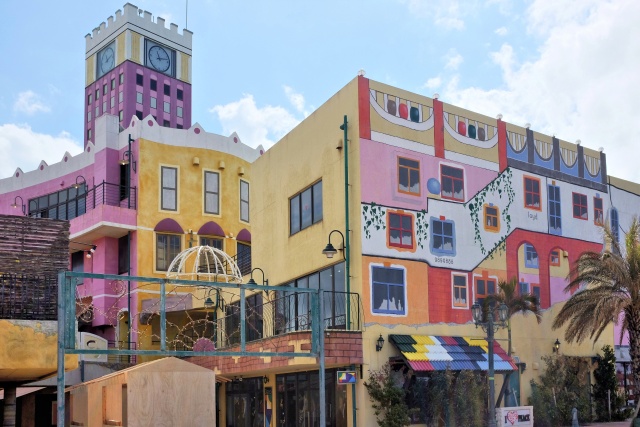
Chatan: Bizarre buildings in American Village
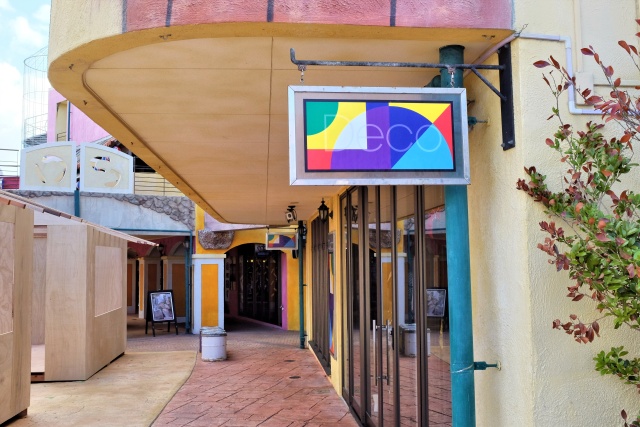
Chatan: American Village store
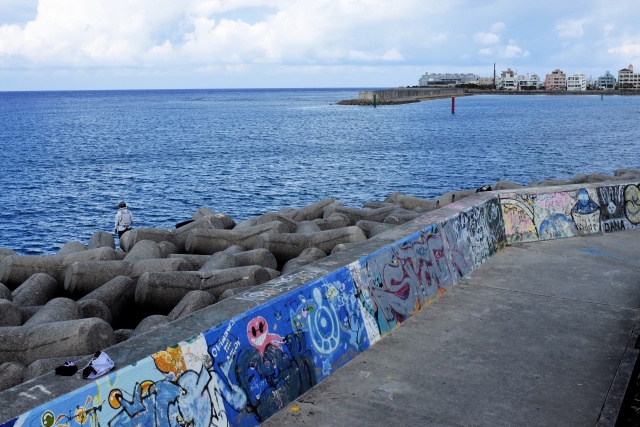
Chatan: Coastline with omnipresent fishermen
Back in Naha
With a fresh wind from the back (finally), I arrived at the Airport situated about 5 km from Naha center. I asked the girls at Japanese Airlines about flight tickets to Taiwan. They sent me from the domestic terminal to the international one, but nobody was selling any tickets there. There was only a long line to the check-in terminal. The Airport was small, so there was nothing left to search for. I got hold of a list of accommodation at an Info Center and returned to the city. At the ferry terminal, I confirmed that there was no ferry service to Taiwan. Then I cycled around the hotels and hostels; everything was fully booked except the most expensive hotels (about 2000 CZK or $100) which had rooms available. Finally, I got lucky at the Livemax Hotel, but they only had a room for smokers. I aired it properly and it was OK. I planned to buy my flight ticket over the Internet.
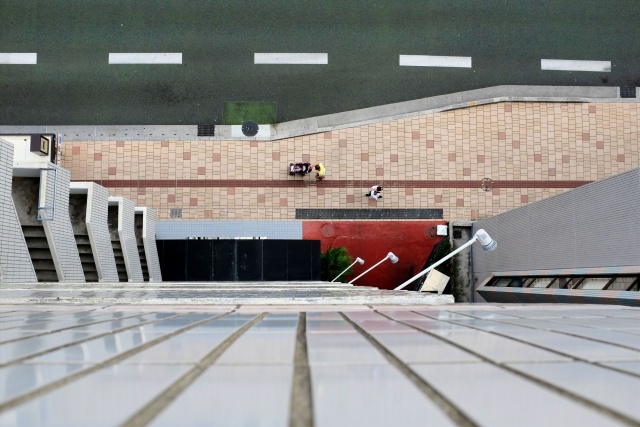
Naha: Stroll
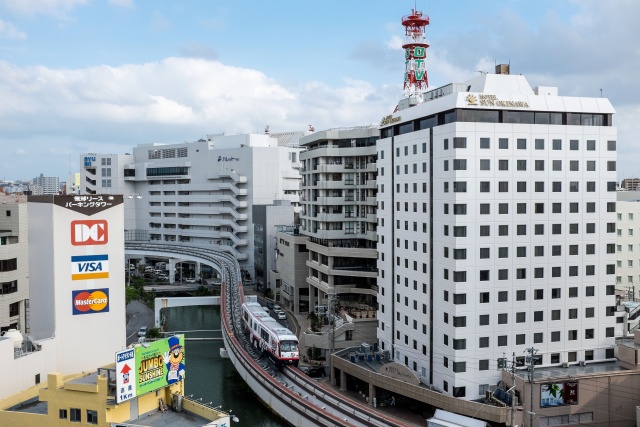
Naha: Above-ground rail system in the city
The cheapest flight cost under 3 000 CZK ($150), it was a direct flight, but with two problems: 08:00 departure. I would have had to get there at 05:00 in order to pack up all my stuff. I would have made it, but more importantly: no luggage was included in that fare. My load would have made the extra fare very expensive. Other flights were either through China, with the need to transfer between two airports in Shanghai over 16 hours. Another option was through Osaka, where I would have to collect and transport my luggage from the domestic to the international departures and re-check it in. There was a direct flight to Taipei for under 6000 CZK ($300) with a 11:55 departure and that one suited me.
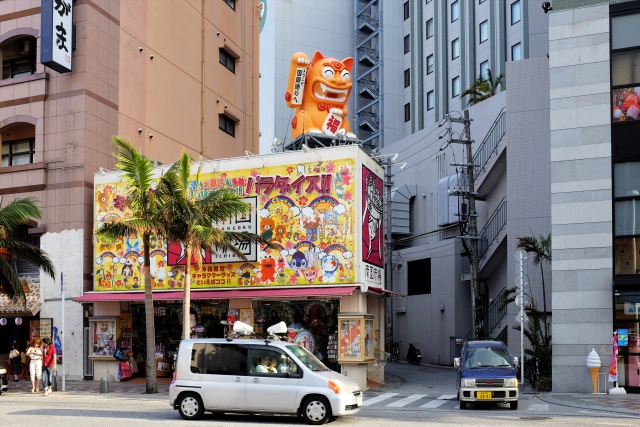
Naha: Typical Japanese annoyance – car with loudspeakers blaring out commercial offers
I had taken down the position of a bike store in my GPS already upon arrival in Naha. I started by going there to ask for a box. The most important thing about a box is its length. The one I got was a bit too short – only 140 cm, which was the longest one they had. Some other boxes were even 35 cm wide, but of the same length, which did not help me. I would have had to take apart the bicycle: remove the wheels, handlebars — really hard work. I found a box for my other luggage in the hotel garage, so all was well. The hotel even had a coin-operated laundromat. For 300 JPY (60 CZK, $3), one hour later I had all my clothes washed and dried. I did not need to buy any washing powder, using the liquid soap from my room.
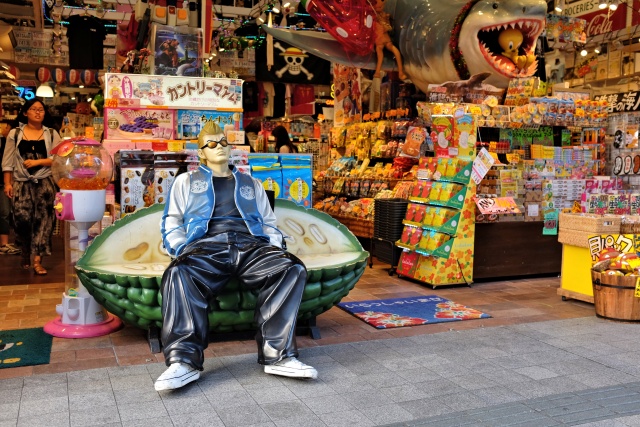
Naha: Laid-back dude
I had a hard time accepting that, for the sake of a short flight, I would need to take apart the whole bicycle and then put it all together again. I thought that I really should get hold of shrinkwrap, remove the pedals, turn the handlebars around and wrap everything in the foil. I tried at the hotel reception, trying to explain to the lady what I needed. I was not sure if she had understood me, but half an hour later, she brought me a print-out of a Google map with a place marked about 10 km out of the city. OK. I left the bicycle in the hotel and walked to the shopping mall about 3 km away. No luck – they only had tape, no foil. I checked on the GPS, which I had providently taken with me, and saw that the recommended store was 4 km from where I was. I went there, strongly doubting whether the receptionist had understood me. I saw several stores: selling food, books and DVDs. Then I noticed another building displaying brooms in front of it – I knew that it was the one! It was a massive Hobby and Gardening store and I actually found the foil I was looking for there. The price was similar to the Czech price: 200 CZK ($10). On the way back, I hopped on the city bus and could spend part of my remaining cash.
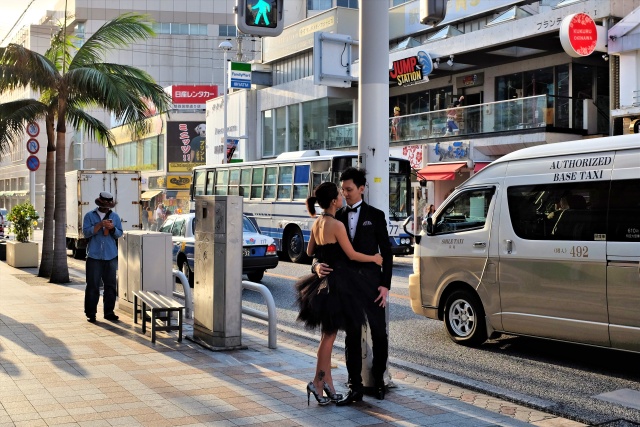
Naha: Love is a powerful enchantress
I spent the afternoon walking along Kokusai — the shopping and entertainment street where everything was available from souvenir stores, pubs, bars and other delights. I was fascinated by a Guinness advertisement, so much so, that I went to several stores to locate it. Compared to Korea, the choice of beer in Japan is very limited. Japanese beer is given priority everywhere.
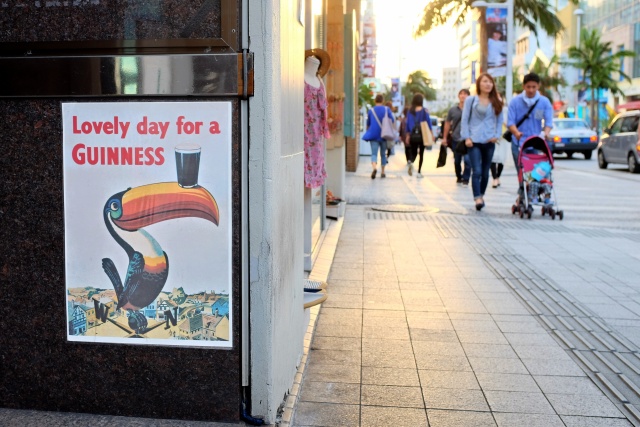
Naha: Advertising works: I felt like tasting it so much, that I eventually bought it in the third combini

Naha: Girl making artistically decorated 'Vietnamese shoes' (slip-slops)
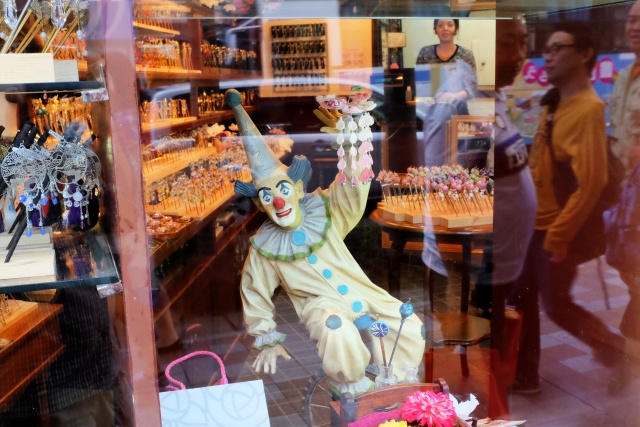
Naha: Upmarket souvenir store display in Kokusai Street
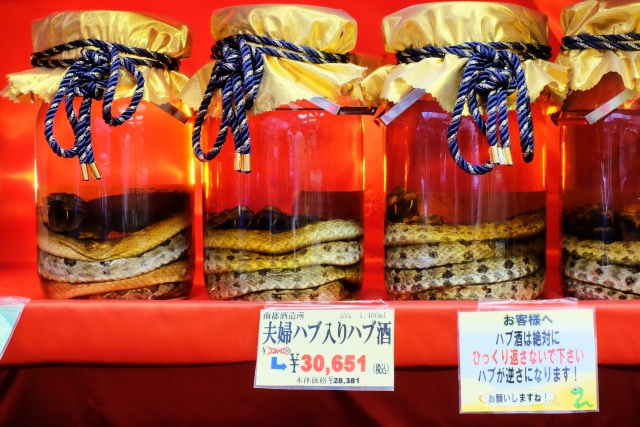
Naha: Three-liter bottles of spirits flavored with a snake
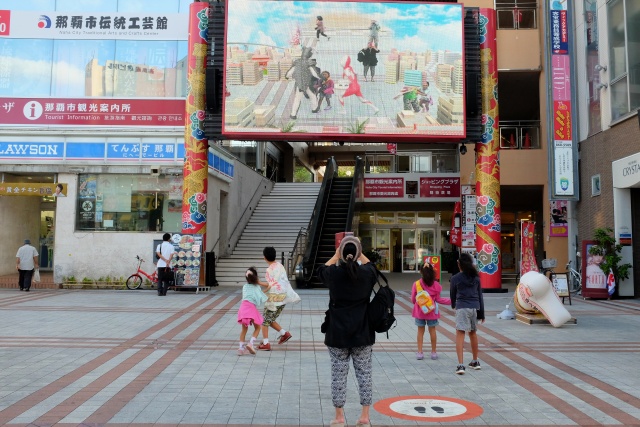
Naha: Various comic figures were blended with the actual street scene on a giant screen, really funny
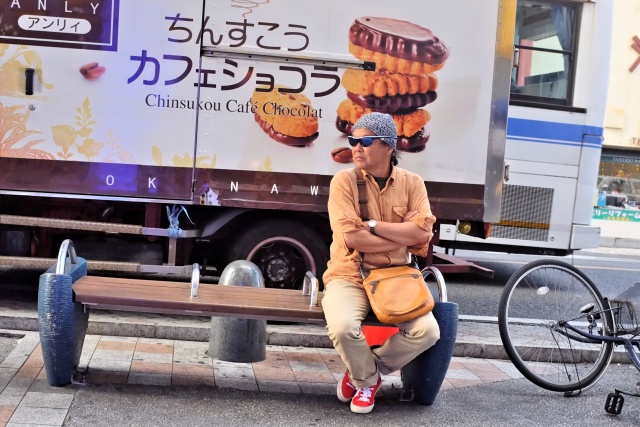
Naha: Kokusai Street
Okinawa Specialties
The most evident are shisa (lions) – statues of which can be seen at almost every house. This fashion arrived in Okinawa via the Silk Road from China during the 14th century and was inspired by the Egyptian sfinga. The male is usually placed on the right side and can be recognized by his open jaw. He brings good luck. On the left is the female – closed mouth (unusual for females) and she protects the house from all disasters.
Another specialty is Awamori liquor, a variety of Korean soju, distilled from rice, usually with a 20% alcohol content. It is served in a glass with ice, sometimes mixed with shikwasa, a strong-tasting local lime. Most importantly, I did not enjoy it. In contrast to Korea, it was luckily possible to purchase wine of a reasonable price and quality.

Naha: Shisa' pair – lady on the left, gentleman on the right
I took some photos from the hotel fire escape stairs, but not without problems. Someone had closed and locked the door on the 10th floor and I could not get back inside. I walked down the fire escape stairs to each floor until I found an open door on the 3rd floor, which was almost my last chance. The 2nd floor door was barred closed, so I would have had difficulties getting in there. Lesson learned: always block the door open first.
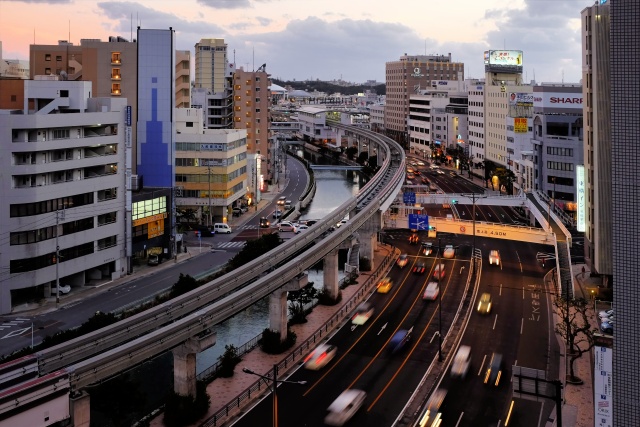
Naha: Evening traffic below the hotel
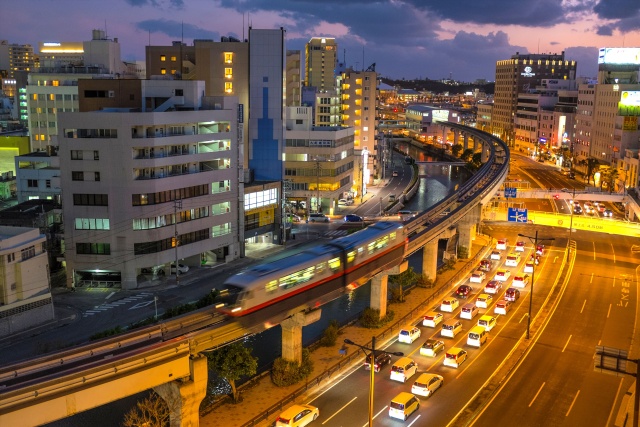
Naha: Constantly changing light
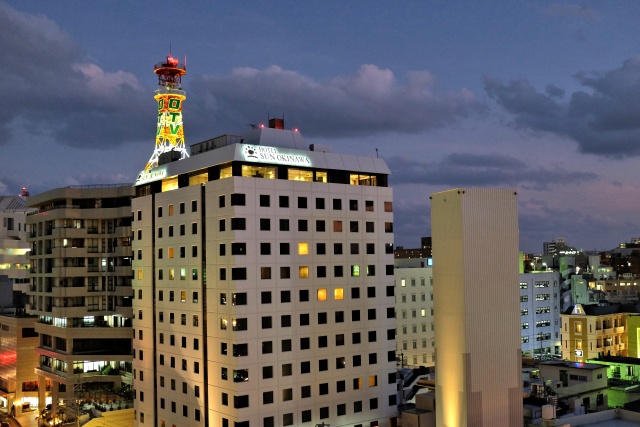
Naha: Hotel across the street
